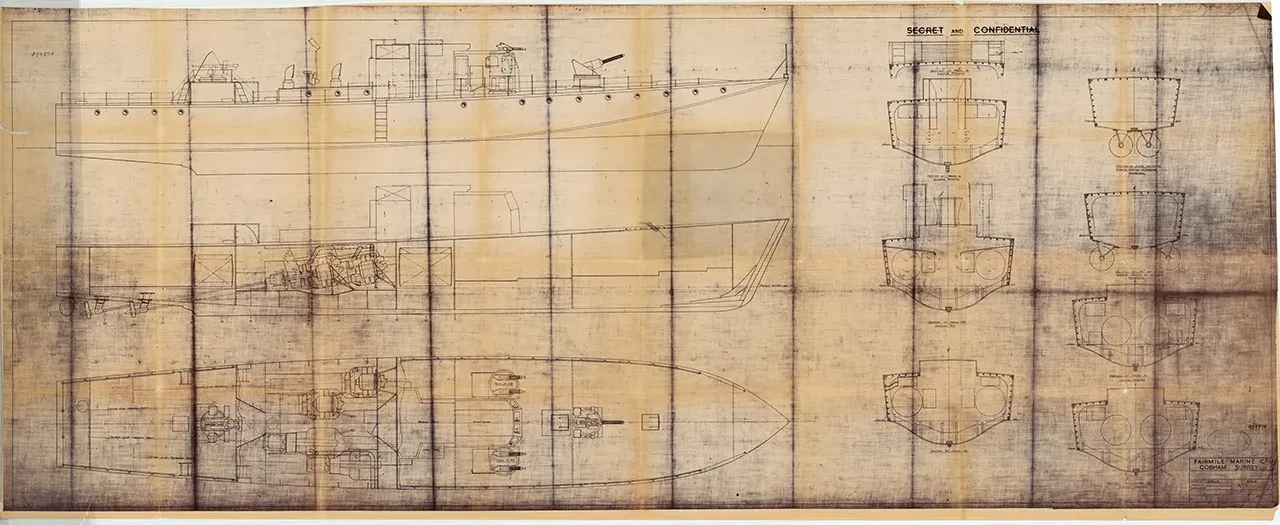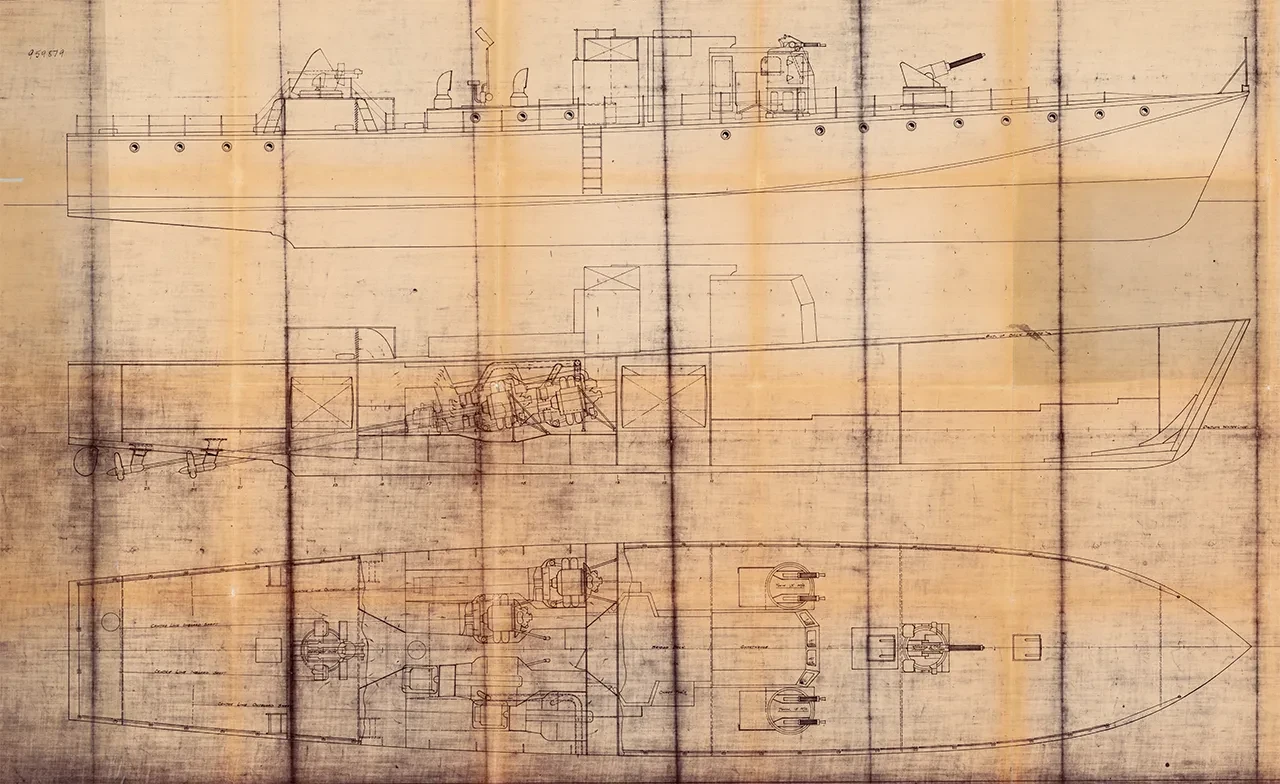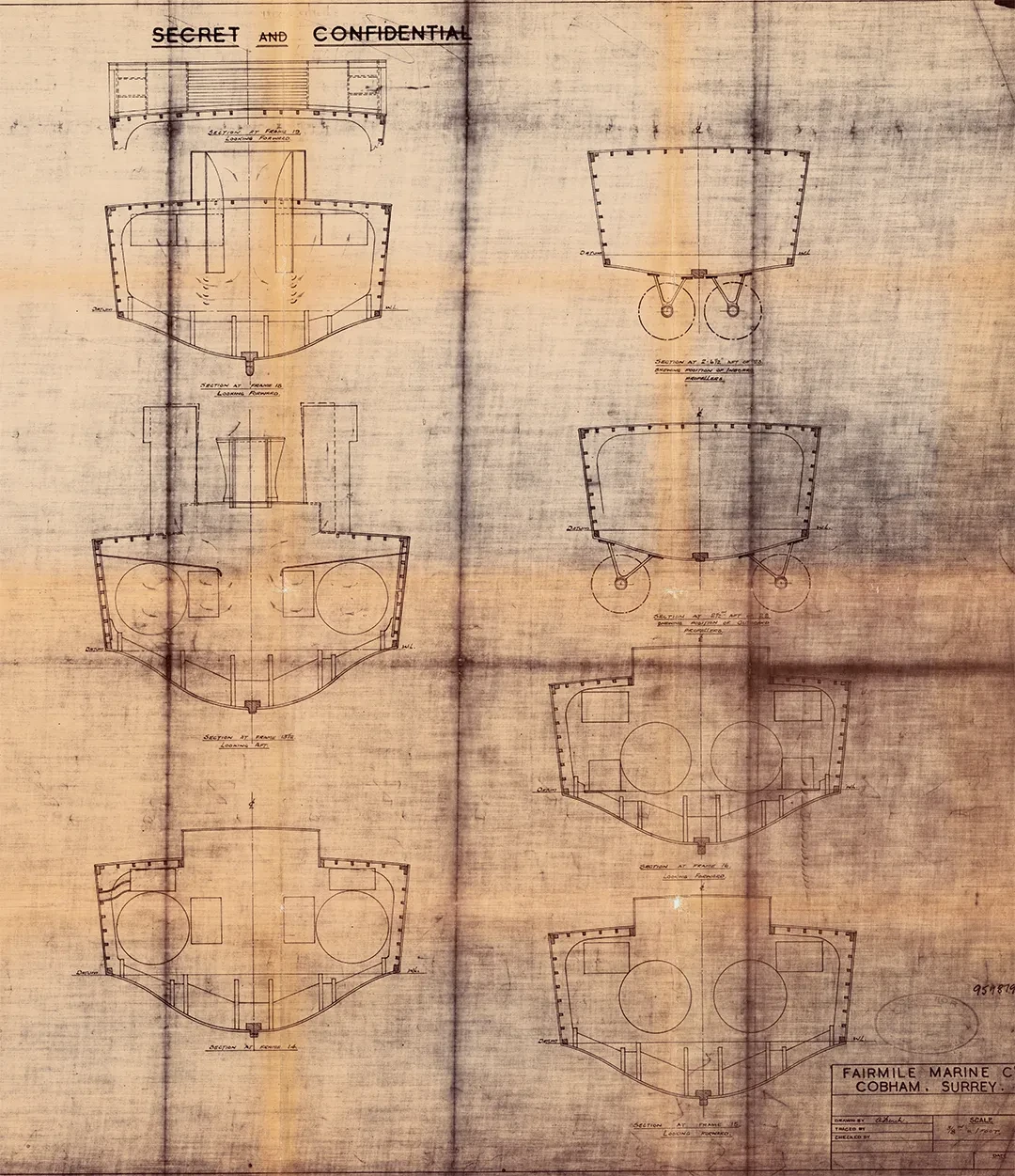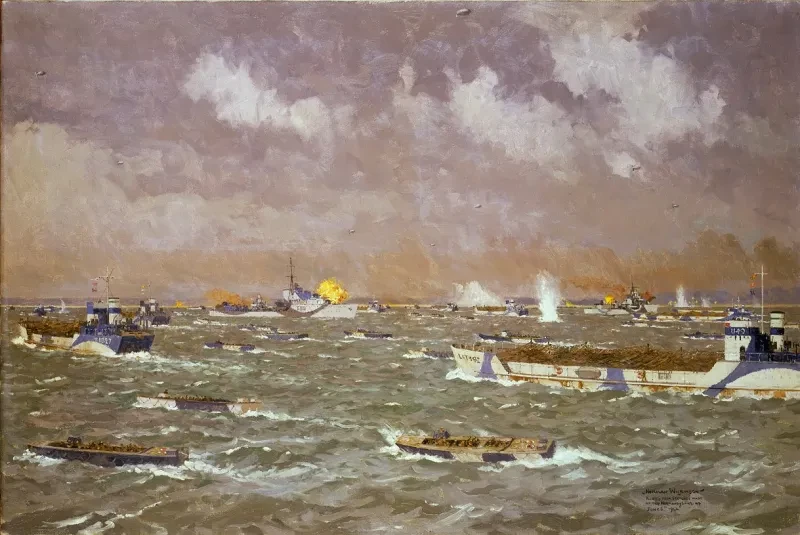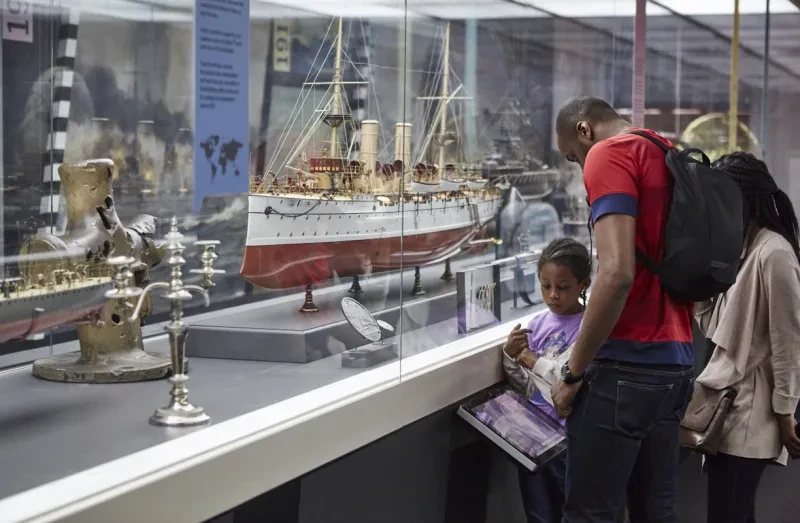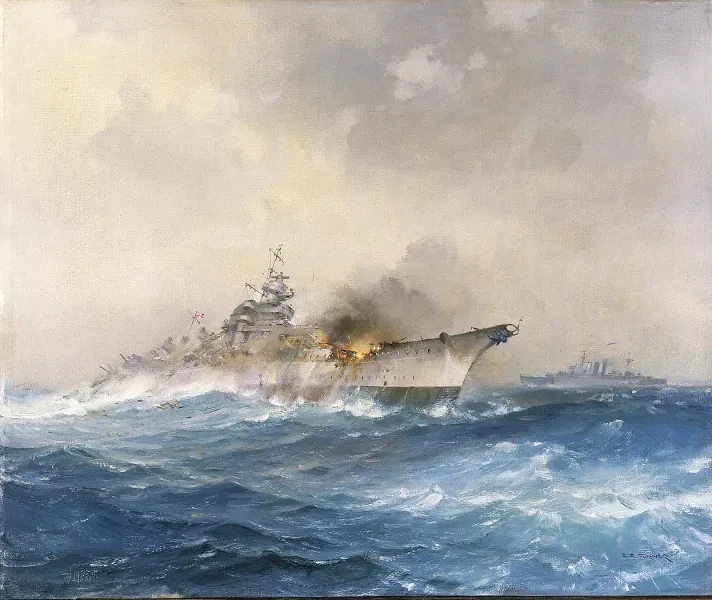
Assistant Curator Alex Grover talks about a recently acquired plan of the Fairmile Type F Motor Gun Boat 2001, a little-known experimental boat design from the Second World War.
Introducing the Fairmile Type F
The Fairmile Type F Motor Gun Boat (MGB) 2001 was a prototype motor gun boat designed by Fairmile Marine of Cobham, Surrey. The boat building company had successfully mass-produced large numbers of prefabricated wooden motor vessels in the late 1930s and during the Second World War. The boats were cheap to make, used materials from non-naval industries and could be assembled in kit form in small shipyards at home and aboard. This meant when war was declared in 1939 that the flow of materials to specialist high-speed boat manufacturers, such as Vospers and the British Power Boat Company were not affected.
Before this vessel was built, Fairmile Marine had designed and built four separate types of small fast vessels. They were mostly used for mine warfare, coastal escort duties and anti-submarine operations during the Second World War. The top speed of the latest craft, the Fairmile Type D, was 31 knots (approximately 35.5 miles per hour).
However, operational experience suggested that this speed would be the maximum Fairmile could achieve with its current engines. These would not be able to cope with the added weight of the more advanced, heavier, weapons and equipment that were now available. A new approach was needed.
An unconventional concept
One radical proposal was to install radial air-cooled aircraft engines in their place. These were more powerful, lighter and more compact than the current engines available to Fairmile Marine. Using the hull of a Fairmile Type D as a test bed, Fairmile installed four Bristol Hercules 1630 horsepower radial engines. These were tried and tested engines that were used in various Royal Air Force aircraft, including the Handley Page Halifax four engine heavy bomber. This was what became the Fairmile Type F.
The Fairmile Type F MGB 2001 was ordered in April 1942 and took 98 weeks to build, finally completing in December 1943. There were various issues found during construction. The designers had to fit large engine air intakes and exhausts to the craft. Mechanical failure in these could disrupt the air-cooling system, increasing the risk of fire. Fairmile had to install a large fan to pump more air to the engines. This fan was run by the engines, meaning less power for the propellers. The prominent air trunking (ventilation shafts) was also vulnerable to enemy fire.
What does the ship plan show?
This is a paper dyeline (printed) copy of an early incomplete design drawing of the Fairmile F. It was drawn by 'A. French' but it has no date or drawing number.
The top left section of the drawing shows an outboard profile view of the MGB with its various armaments attached. As you move further down the left side of the drawing there is an internal profile view of the vessel along with a top-down view of the boat. On the latter two diagrams, there are arrows feeding into the four aircraft engines fitted inside the hull. The arrows indicate the passage of air through the large air intake situated underneath the Oerlikon gun platform near the stern of the vessel.
The arrows continue into the engine room, through the engines and exit out through the funnel. The right-hand side of the drawing consists of eight section views at various points along the boat. They show the position of the four engines within the engine room, further details on airflow inside the hull and the position of the funnels.
Why was the vessel never operational?
The Fairmile F’s engines had more power compared to the Fairmile Type D’s engines and it was expected to have a maximum top speed of 37 knots (around 43 miles per hour). Its top speed at trials, however, was only 30 knots (around 35 miles per hour).
The ongoing mechanical issues and the lacklustre speed led to a loss of Admiralty interest in the design and it was eventually disposed of in June 1945.
New insights
The drawing provides a foundation for a little-known avenue of wartime innovation in ship design. It also highlights an interesting collaboration between the Royal Navy and the Royal Air Force during the Second World War. Compared to other Second World War coastal craft, little is known about this one-off vessel.
Naval historian and draughtsman John Lambert asserted that no drawings of the boat existed and only one unofficial photograph was found of MGB 2001. Since that publication in 1990, Lambert received a single undated paper dyeline copy from Mr Barry Sharman of Woolston Southampton, from which he was able to compile two drawings of MGB 2001.
Barry Sharman then kindly donated the same drawing to the National Maritime Museum in 2020. This means that this drawing is the only known surviving design plan of the Fairmile Type F.
Further reading
John Lambert and Al Ross Allied Coastal Forces of World War 2 Volume 1: Fairmile Designs & U.S. Submarine Chasers (Conway Maritime Press, London, 1990)
Norman Freidman British Coastal Forces: Two World Wars and After (Seaforth Publishing, Barnsley, 2023)

